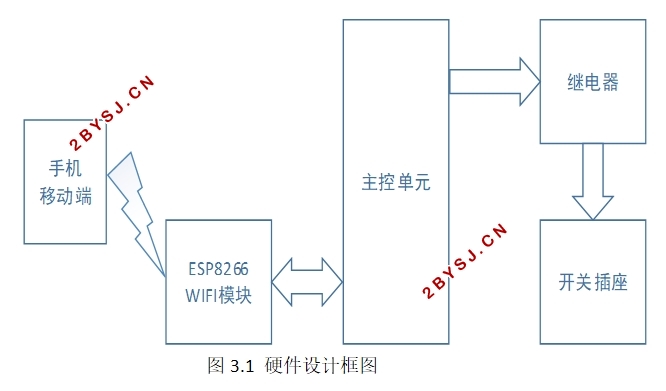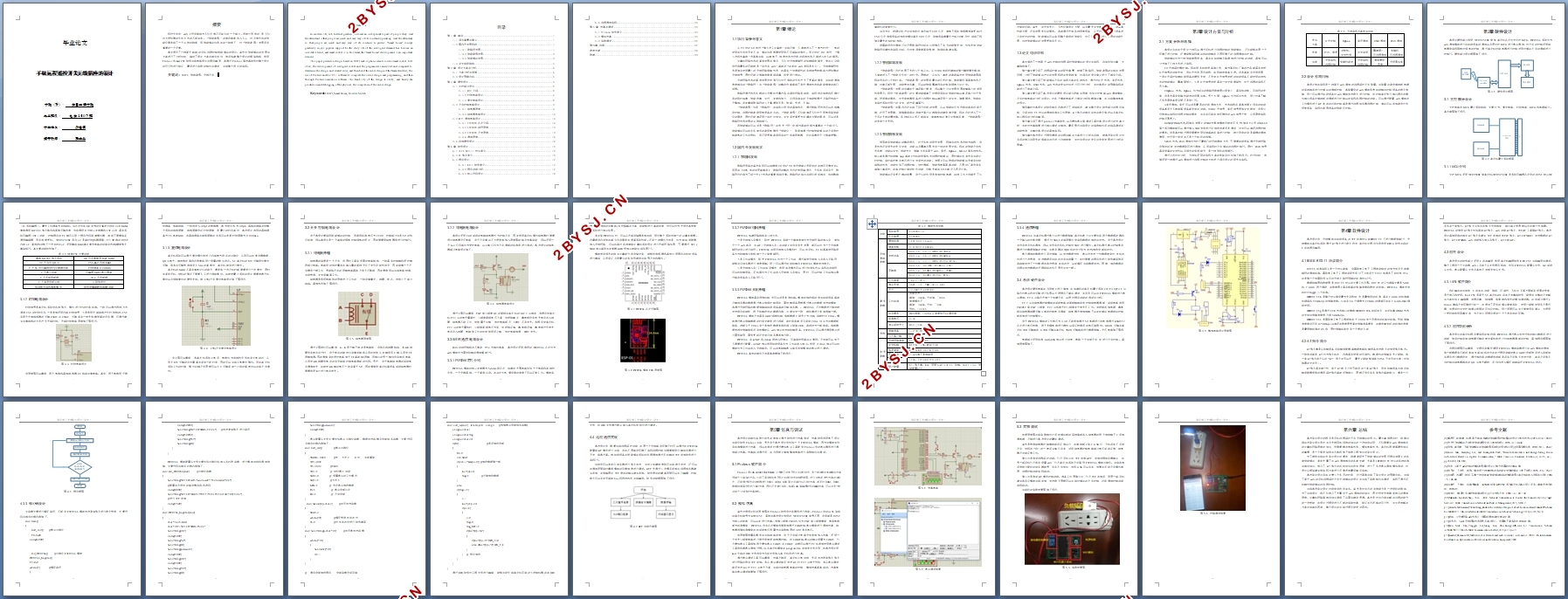手机远程遥控开关无线插座的设计
无需注册登录,支付后按照提示操作即可获取该资料.
手机远程遥控开关无线插座的设计(任务书,开题报告,外文翻译,论文12000字)
摘要
现代生活中,wifi上网逐渐成为人们日常不可缺少的一个部分。而随之而来的,是人们对方便快捷的生活方式的不断追求。“智能家居”的理念渐渐深入人心,对日常生活的智能化需求成了一个必然的趋势,而智能插座则是在这一趋势下,对“智能家居”发展至关重要的一个元素。
本文提出了一种基于WIFI的手机远程控制智能插座的设计。首先对智能插座的发展与方案进行了分析比较,确定了设计方案与相关规则,然后搭建整个设计的框架结构,利用Proteus和keil C51软件完成电路设计与程序编写,再通过Proteus等仿真软件对整个设计的可行性进行验证,最后进行实物的制作与调试,完成整个设计的实现。
关键词:WIFI;智能家居;无线开关
Abstract
In modern life, wifi Internet gradually becomes an indispensable part of people daily. And the attendant is that people are quick and easy way of life constantly pursuing. And the attendant, so that people are quick and easy way of life continue to pursue. "Smart home" concept gradually enjoys popular support for the daily life of the intelligent demand has become an inevitable trend, and smart socket is in this trend, the "smart home" development is an important element.
This paper presents a design based on WIFI mobile phone remote control smart socket. First of all, the development of intelligent socket and the program were analyzed and compared to determine the design and related rules, and then build the entire design of the frame structure, the use of Proteus and keil C51 software to complete the circuit design and programming, and then through Proteus simulation software The feasibility of the design to verify, and finally the production and debugging of the physical, the completion of the entire design.
Keywords: WIFI; Smart Home; Wireless Switch


目录
第1章 绪论 1
1.1项目背景与意义 1
1.2国内外发展现状 1
1.2.1 物联网发展 1
1.2.2智能家居发展 2
1.2.3智能插座发展 2
1.3论文组织结构 3
第2章 设计方案与分析 4
2.1 方案分析与选择 4
2.2设计预期目标 5
第3章 硬件设计 6
3.1 主控部分设计 6
3.1.1 MCU介绍 6
3.1.2 时钟电路设计 7
3.1.3 复位电路设计 8
3.2开关控制电路设计 9
3.2.1 继电器原理 9
3.2.2 继电器电路设计 10
3.3 WIFI通信电路设计 10
3.3.1 ESP8266芯片介绍 10
3.3.2 ESP8266组网原理 12
3.3.3 ESP8266开发原理 12
3.3.4 通信原理 14
3.4 总体硬件设计 14
第4章 软件设计 16
4.1 IEEE 802.11协议简介 16
4.2 AT指令简介 16
4.3程序设计 17
4.3.1 KEIL软件简介 17
4.3.2 程序功能分析 17
4.3.3 核心代码设计 18
4.4 远程通信实现 22
第5章 仿真与调试 23
5.1 Proteus软件简介 23
5.2 模拟仿真 23
5.3 实物调试 25
第六章 总结 27
参考文献 28
致谢 29
